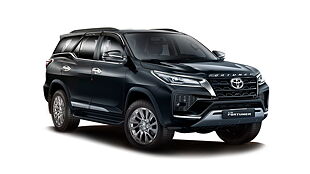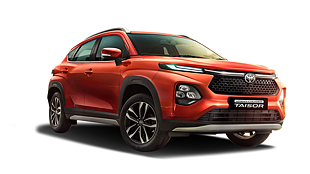Green Peace

The Prius is the second ‘real’ hybrid to make it to our shores after Honda’s Civic Hybrid. The Prius has also been possibly the one real success story in the world of Hybrids and has adorned many a Hollywood celebrity’s driveway. But just how good is it in the Indian context and will it have any takers? To settle this question in our minds and to tell you a little more about this popular ‘green’ automobile, we took the Prius for a short drive so we could bring you this first-hand driving impression of the Prius right here in India.
This third-generation Toyota Prius was launched in India during the Auto Expo’10 held earlier this year - in January 2010. The new generation Prius has undergone some minor aerodynamic changes to further enhance the efficiency of the car. It is about four inches longer than the outgoing car and Toyota’s chief designer Wahei Hirai penned in the so-called ‘Aero-corners’ at the front and rear – which in common man’s speak is sharp corners. These help make the airflow cleaner and reduces turbulence. Add to this more aerodynamically friendly lines and you’ve achieved a co-efficient of drag to 0.25 from 0.26. This makes it one of the most aerodynamic sedans currently being sold across the globe (the other one that’s on sale in India is the Mercedes Benz E350). This might not sound much, but when we consider the fact that it’s a hybrid with its sole purpose being fuel efficiency, every small step towards this ‘green’ goal counts. However with our chaotic traffic and much lower cruising speeds than on most freeways abroad, one will really have to see whether there are any real benefits of all the aerodynamic wizardry that have gone into the new Prius.

The Toyota Prius is quite futuristic looking, and can be spotted amongst a crowd of regular cars. It has a small front grille and the current generation Prius wears a bolder Toyota badge on its hood when compared to the outgoing variant. The front now wears a very family-face and is unmistakably a Toyota. However, there’s an uncanny resemblance to the Honda Insight (See Pics) and we’re not getting into the who-copied-whom debate. (Who knows, the Japs may actually be churning both cars out of the same factory to reduce development and production costs!) The Toyota Prius looks like a compact sedan, but when you step into the car, your opinion changes immediately. There’s just so much of space! The engineers at Toyota have truly utilized space as effectively as possible and it shows. The huge dash, the flowing centre console theme and the blue on black information display gives it a spaceship-like feel and the Heads-Up display just adds to the overall tech-character of the car. It’s isn’t nearly as clear in bright sunlight (which we seem to have no shortage of!) and works really well in lower light conditions. We also loved the touch sensitive (Touch Tracer in Toyota speak) steering mounted controls which detect touch and immediately project an image of the controls on the display so you can keep your eyes on the road and yet know exactly what button you are pushing – a brownie point in the safety book. Also adding to the safety quotient of the Prius is its excellent structural integrity that helps it absorb impacts fairly well. And to reinforce this fact, the Prius made it to third spot for the safest cars of 2009 in the EuroNCAP tests.
You will find that front and rear passengers will have absolutely no reason to complain. The seating position is upright and comfy and you can step in and out of the car very comfortably. The doors open wide and even the slightly arthritic will have no trouble with the Prius. The interiors come in two options – one is Aqua and the second, medium grey. The Prius comes in two trim levels. The Z3 variant is a more basic one and comes with fabric seats and the top variant, the Z4 has leather upholstery. The car has plenty of cubbyholes for all the odds and ends, like the arm rest in the centre console, the huge glove box and some storage space below the centre console. The Prius uses shift-by-wire technology for its gear shift, so the gearknob is light and delicate and one can shift simply with a flick of a finger. The centre monitor displays the power usage meter for the electric motor and the engine, energy monitor which shows the state of charge of the batteries and the display for the steering controls.
First Drive (contd.)

The Toyota Prius is powered by a 1.8-litre engine(code name: 1NX-FZE) that runs on the Atkinson cycle rather than the Otto cycle as it increases the efficiency by 12-14% compromising a bit of performance. The engine and the motor both together produce power just shy of the 160bhp mark. Hybrids are generally of two types; parallel hybrid and series hybrid. In the parallel hybrid system, the engine and electric motor both power the wheels, while in series-type the engine powers the wheels through the electric motor. The Prius works on the principle of series-parallel (a combination of both). This is due to the power split gearbox which connects the engine, electric motor and the generator as a single unit, just like planetary gears in an automatic transmission. The Prius also uses KERS (Kinetic Energy Recovery System). When a normal car brakes, the brakes convert the kinetic energy of the wheels (which is actually the motion of the wheels) into heat energy which is released into the atmosphere and it goes waste. However, this isn’t the case in hybrid vehicles and the Kinetic Energy is used to charge up a battery.
Get into the car, with smart entry (where the car senses the key in its vicinity and unlocks the door) and push the power button to start the car. If this is your first time in a Prius, you might keep on waiting for the engine to start until you realize that the electric motor has all set to go. The Prius is more electric and electronic rather than conventionally mechanical, so it is very quiet and feels unreal when compared to other cars. Toyota have, what they call the Hybrid Synergy Drive in the Prius. This really is Toyota's name for advanced technology hybrid powertrain that combine gasoline and electric propulsion with the ability to operate on one or the other, or both, depending on the driving situation. By enabling the vehicle to operate at its most efficient level, regardless of engine speed, the Hybrid Synergy Drive technology boosts power output and, at the same time, enhances efficiency and emissions control.

There are really four modes in which you can drive the Prius. One is Normal, where you simply get into the car and start it up and go with the car deciding what’s best for it. Then there’s the Eco mode which tweaks a few settings including running the air-con more efficiently. The power mode gives the Prius slightly better response and then there’s the EV mode which makes the Prius completely electric which is really good for very short distances but it has a speed limit of roughly 40kph. There’s also plenty of tech working silently in the background, like the accelerator pedal which increases resistance so you’re actually driving more efficiently ensuring that you’re foot isn’t nailed to the floor which can be a huge economy killer. In terms of overall economy one should be able to achieve 18kpl in our conditions. Granted there are several diesels (and much less expensive to buy!) that can achieve 15kpl plus in regular driving conditions, so who exactly is going to buy one? Well, at almost Rs 28lakhs (ex-showroom, Mumbai) for the base variant, it is a lot of money (since it’s a CBU import). So, obviously it will be someone rather rich who would like to buy the Prius as a statement or want to buy it for the technology it has. (It certainly won’t be the only car in the house too!)But for the steep price, we don’t even get the fancy LED headlights or the Solar roof (which would be super useful in India) to ensure that the cabin stays cool. Yes, it is a green car and it does make peace with the smog filled environment by polluting less. If Hybrid’s or EV’s have to succeed in India, the Government really does have to step in and get in on the act. But if you want to really be environmentally friendly and don’t have so much money to lavish on a Prius, get yourself the latest in technology, the HPV (human powered vehicle) – a bicycle!
![Toyota Prius [2009-2016] Image Toyota Prius [2009-2016] Image](https://imgd.aeplcdn.com/272x153/cw/cars/toyota/prius.jpg?q=80)

























